Specialty cartridges for the AR-15 are nothing new. For decades, shooters and engineers have been continually experimenting with different cartridge designs and permutations with the goal of enhancing AR-15 performance in some way. The goals themselves are varied, each with a different scenario in mind. The 25-45 Sharps necks the 22 caliber .223 Remington cartridge up to 25 caliber in order to enhance medium game stopping power. The 300 AAC Blackout pushes a heavy 30 caliber projectile optimized for subsonic performance. The 6.5 Grendel offers greater ballistic performance over long distances. Enter 22 Nosler.
22 Nosler: The Goals are Simple
22 Nosler is all about pushing maximum velocity with a 22 caliber projectile from an AR-15 with minimal required changes to the rifle. With just a barrel and magazine swap, you can push a 55 grain projectile from a 22 Nosler AR-15 with a gain of 20% more muzzle energy compared to .223 Remington: a significant boost. If you want an AR-15 that will push velocities to the max, the 22 Nosler is up to the task.
Above we see .223 Remington (left) beside 22 Nosler (right). You can see right away how much more case capacity the 22 Nosler has compared to the “defacto standard” .223 Remington. Because the 22 Nosler retains the same basic case rim profile from the .223 Remington and 5.56 Nato cartridges, a standard AR-15 bolt can be used.
AR-15 Conversion to 22 Nosler
In order to convert an AR-15 from .223 Remington (or 5.56 NATO) to 22 Nosler, there are two components that need to be swapped out:
- The barrel (replaced with a 22 Nosler barrel, or purchase complete 22 Nosler upper)
- The magazines (6.8 SPC magazines are used for 22 Nosler)
In addition to the barrel and magazine swap-out, there are some other considerations that should be evaluated related to 22 Nosler and your AR-15 rifle:
- An adjustable gas block can aid in tuning the pressure and timing specifics for 22 Nosler.
- A 2″ longer gas tube is sometimes used for 22 Nosler (and corresponding barrel with extended gas block mount/port). This can slow down the gas timing a touch and reduce pressures slightly which can help this “hot rodded” cartridge to work better.
For 22 Nosler barrels, there are several great options. Odin gunworks and White Oak Armament would be two solid products.
Above: 24″ 1:8 twist 22 Nosler barrel from White Oak Armament. The importance of a quality barrel cannot be overstated, so make sure you invest in a quality barrel if you are going to purchase either a 22 Nosler conversion barrel or a complete upper chambered in 22 Nosler. A 1:8 twist is great for the bullets suited for 22 Nosler.
There are quite a few 6.8 SPC magazines to choose from, and I ended up using a few AR Stoner 6.8 SPC magazines which all ran great. I used both the 10-round and 15-round 6.8 SPC magazines with zero issues.
Above: A steel AR-15 .223 magazine (top) compared to a steel 6.8 SPC AR-15 magazine (bottom). The big difference is in the wider portion of the feed lips.
In a recent PRS Match, I used a 22 Nosler AR-15 to compete. This rifle has an 18″ stainless barrel, and a twist rate of 1:8. You can read more about my experiences during this (1st for me) PRS match here:
The 22 Nosler Cartridge
The 22 Nosler cartridge is a “new design”, it’s not based on a parent cartridge like many of the specialty cartridges in existence are. Let’s take a quick look at the design specifications for 22 Nosler:
(Image from the 22 Nosler Load Data Page).
To summarize the 22 Nosler design in comparison with the familiar .223 Remington:
- Case length: same
- Cartridge OAL: same
- Shoulder: datum line is shorter (set back more) for safety purposes (to prevent .223 cartridges from being chambered in a 22 Nosler AR-15)
- Neck diameter: same
- Case body: larger in diameter (results in rebated rim where .223 is rimless)
Case Capacity
As stated in the video, the 22 Nosler provides most of the ballistic advantages of 22-250, but in a package that is compatible with the AR-15 rifle platform. So let’s take a quick look at case capacity between .223 Remington, 22 Nosler, and 22-250:
From this data we see that 22 Nosler adds about 23% case capacity compared with .223 Remington. In contrast, moving up from 22 Nosler to 22-250 adds another 23% in case capacity. This means 22 Nosler is essentially a “half way point” between .223 Remington and 22-250. The trade-offs are rifle options (22-250 is mostly a short bolt action cartridge), muzzle velocity, and barrel life. Since faster muzzle velocities translate to shorter barrel life, the 22 Nosler again provides a nice set of trade-offs compared to .223 and 22-250. If you have to have maximum velocity for a 22 caliber projectile, 22-250 is the ticket. If you want to get maximum 22 caliber velocity from an AR-15 rifle, 22 Nosler is the ticket.
Another interesting comparison is 5.56 NATO -vs- .223 Remington -vs- 22 Nosler. Each of the corresponding cases has different case capacities, and these differences are most clear when we peer “inside the cartridges”:
In this picture we see from left to right:
- 5.56 NATO (note thicker brass, especially at the base)
- .223 Remington
- 22 Nosler
When you compare case capacity with a chart, you get an even clearer picture of the difference between the capacity of each of these cases:
An important difference to call out here is the maximum working pressure for each of these cartridges: 62,000 PSI for 5.56 NATO, and 55,000 PSI for both .223 Remington and 22 Nosler. While 5.56 NATO has the highest rated pressure, it has the lowest case capacity in this lineup of cartridges. That means you can push velocities higher in some cases (compared to .223 Remington), but you are limited with powder charge due to the lower case capacity. 22 Nosler provides much more space for propellant, but just as in any other shooting/reloading scenario you have to keep an eye on pressures.
22 Nosler Ballistic Comparison
We’ve already covered the fact that 22 Nosler adds significant case capacity compared to .223 Remington. It also has less case capacity compared to the “22 caliber king”, the 22-250. So what does this translate to in terms of ballistics? How much better does 22 Nosler perform compared to .223 Remington? How much does 22 Nosler give up compared to 22-250? Let’s look at some data.
For this exercise, I looked at the Nosler load data for .223 Remington, 22 Nosler, and 22-250, all with 55 grain projectiles. From this data, I came up with the following “representative values” for muzzle velocities:
- .223 Remington: 3200 fps
- 22 Nosler: 3500 fps
- 22-250: 3700 fps
*Note that for each of these cartridges, the velocities for 55 grain projectiles can be higher and lower compared to the values I am using for this comparison. Nosler used 24″ barrels with varying twist rates to produce this data. In light of all that, these values are somewhat subjective but I feel they are a good representation of “median” velocities for this scenario. Your mileage may vary!
First, lets look at velocity values out to 1000 yards based on data generated by the Shooter App: (click/tap to enlarge)
Here are the first things that jumped out at me when looking at this chart:
- 22 Nosler is closer to 22-250 velocity compared to .223 Remington
- At about 600-800 yards, 22 Nosler shows a drastic improvement over .223 Remington
- At 1000 yards, the low BC of the 22 caliber projectile (0.267 BC used for this data) takes its toll on all three cartridges’ performance
Similarly, the drop data shows the difference in performance between these three cartridges, but in a different format: (click/tap to enlarge)
If we take a look at the drop at 600 yards, it’s clear that both 22 Nosler and 22-250 show much better performance for trajectory:
- .223 Remington: -109.2″
- 22 Nosler: -89.2 (20″ less drop compared to .223 Remington)
- 22-250: -78.9 (10.3″ less than 22 Nosler)
So while 22-250 wins at 600 yards, 22 Nosler “hangs well” with the 22-250. And the differences are even more drastic if you follow the trajectories out to 1000 yards (see right-hand side of graph above). If you look at the total span of difference in drop between .223 Remington, 22 Nosler, and 22-250, 22 Nosler sits at about 1/3 the difference in drop compared to .223 Remington (both compared to 22-250). Or stated more simply, the 22 Nosler will get you about 2/3 of the ballistic advantage that 22-250 has over .223 Remington, but in a package that’s compatible with the AR-15 platform. Hope that makes sense! Heavier higher-BC bullets like the Nosler 70 grain RDF bullet will enhance the 22 Nosler’s performance significantly compared to this “common 55 grain” 22 projectile data. I’ll have more to share on that in content which will follow this post!
Reloading for the 22 Nosler
My next post and video will cover 22 Nosler reloading in-depth, but I wanted to cover the basics here so that you can understand what’s involved. The good news is, if you’re setup to load .223 Remington, you have little to do in order to load 22 Nosler.
Here’s a summary of reloading 22 Nosler compared to reloading .223 Remington:
- Press, shellplate/shellholder/powder measure: same with generally the same setup (same primer, same case neck diameter, same case length)
- Dies: 22 Nosler specific
- Powders: Generally slower with some overlap (Hodgdon Varget for example)
- Primers: Same
- Bullets: generally the same
- Cases: 22 Nosler only (can’t be reliably formed from other cartridges)
- Case gage: super important, specific to 22 Nosler, soon to be available from L.E. Wilson!
So if you’ve been reloading .223 Remington (or 5.56 NATO) you just need to get 22 Nosler dies, a case gage, and you may need slower powder(s). That’s about it! It’s super-easy to switch between loading for the two.
I got my hands on this early production example of the new 22 Nosler case gage from L.E. Wilson, a must-have for any cartridge (but especially bottleneck rifle) you reload.
Summary
22 Nosler was created to offer maximum 22 caliber velocity in a reliable AR15-compatible package. With just a barrel and magazine swap, you can transform your AR-15 into a 22 Nosler rifle. If you need maximum performance from an AR-15, and want to use inexpensive 22 caliber projectiles, the 22 Nosler is worth checking out! There are a few things that need a bit of special attention with this hot-rodded alternative to the .223, some of which are covered in this article, and others I’ll address when going in-depth on 22 Nosler reloading.
It’s been a lot of fun to get hands-on with this new cartridge from Nosler- and if you have 1st hand experiences I would love to hear them! (please leave a comment). I’m off to go load some 22 Nosler, so I’ll see you all later!
Thanks,
Gavin
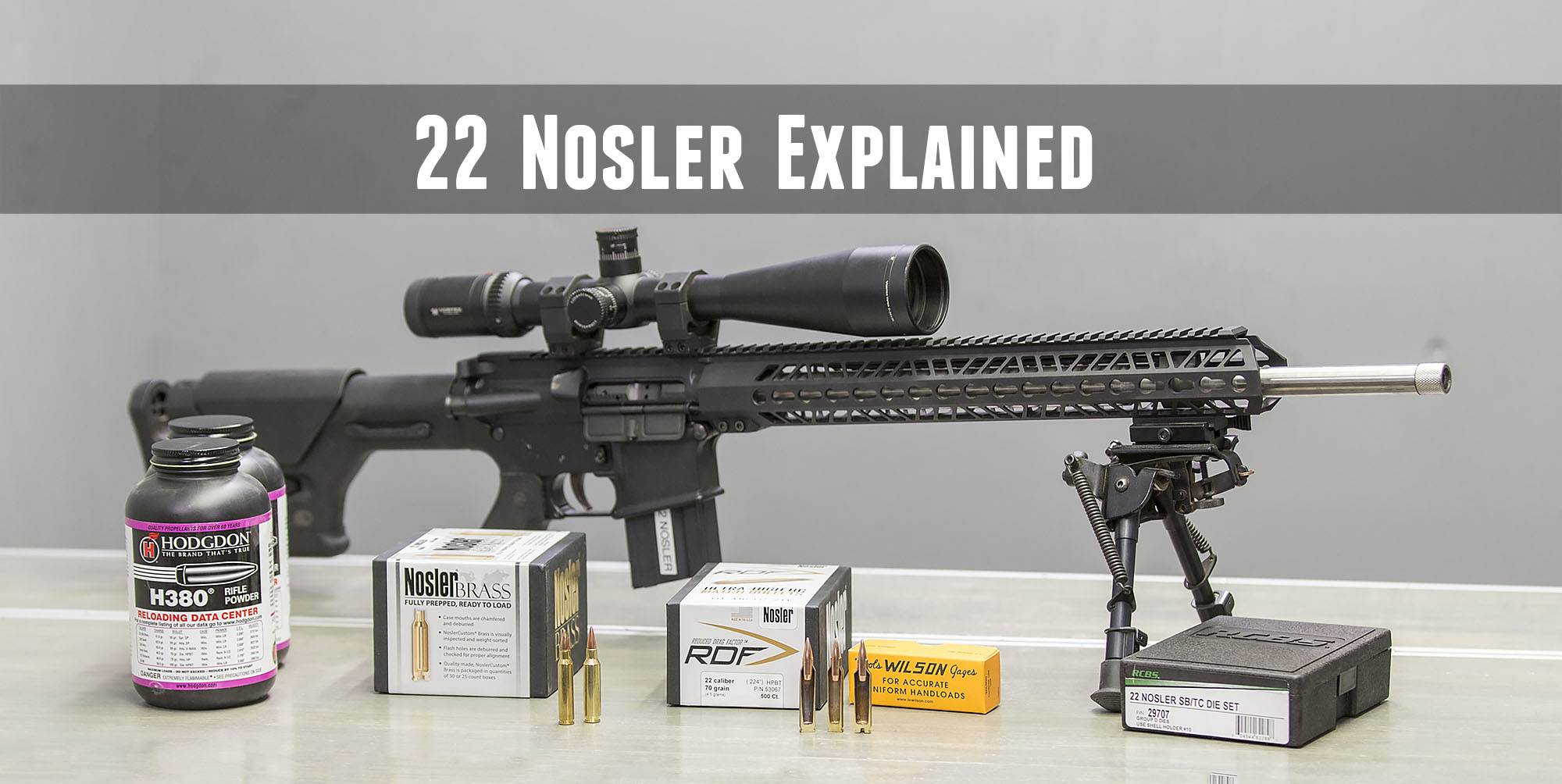
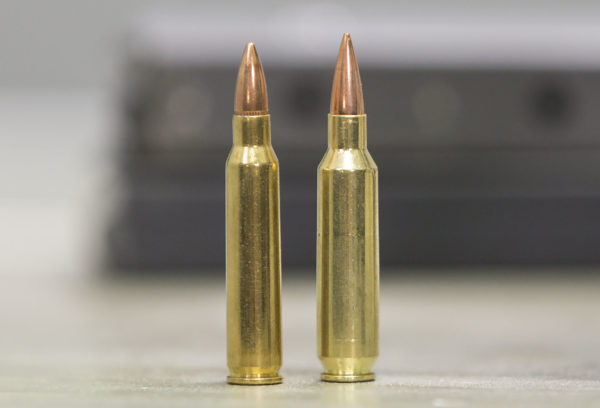

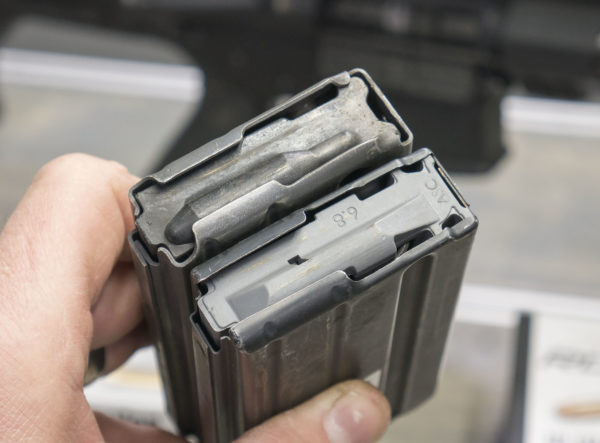
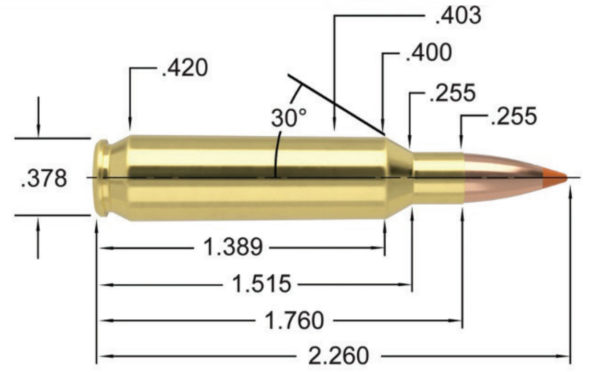
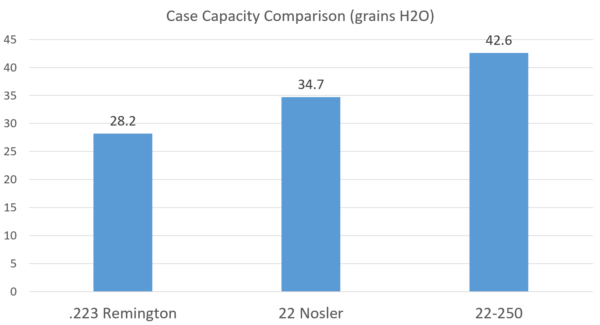
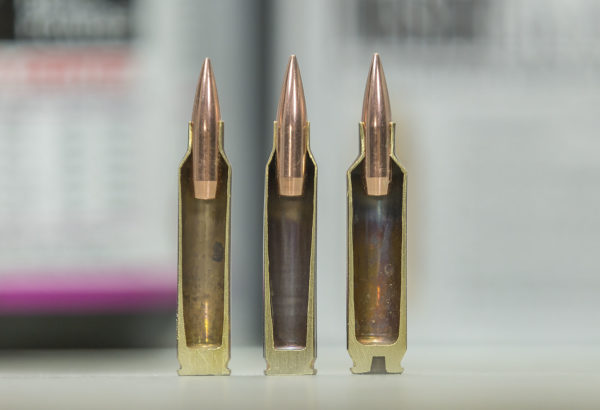
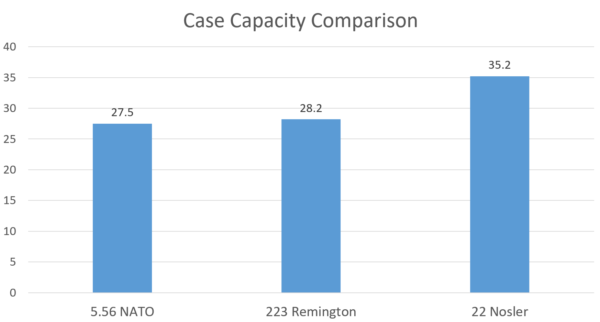
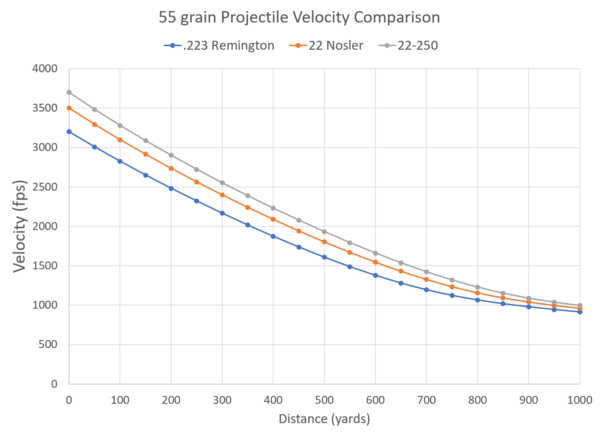
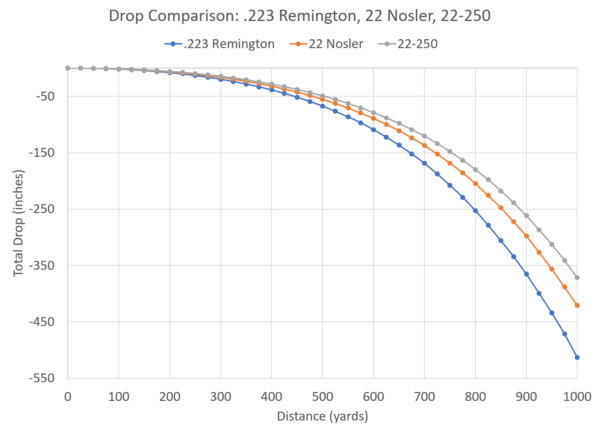
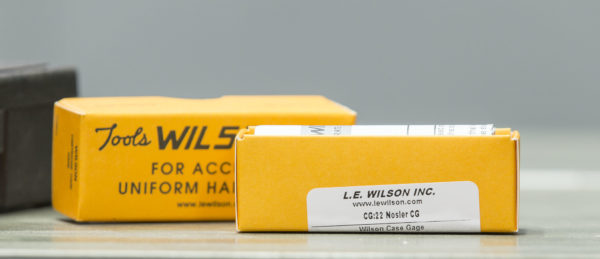


















































































Keep up the 22 Nolser content! A comparison with the 224 Valkyrie as it becomes available would be awesome. What’s the gas system length of that WOA barrel?
Great write up and video. I have been looking for a cartridge that will fill the role from 0-600 yards in the local Designated Marksman Matches and this looks like it will fit the bill perfectly.
-Thanks
Wouldn’t the better comparison be with a 69 or 77 SMK? I would love to see the data for the heaver long range target bullets. I think of the 55gr class bullets as varmint or short range target bullets.